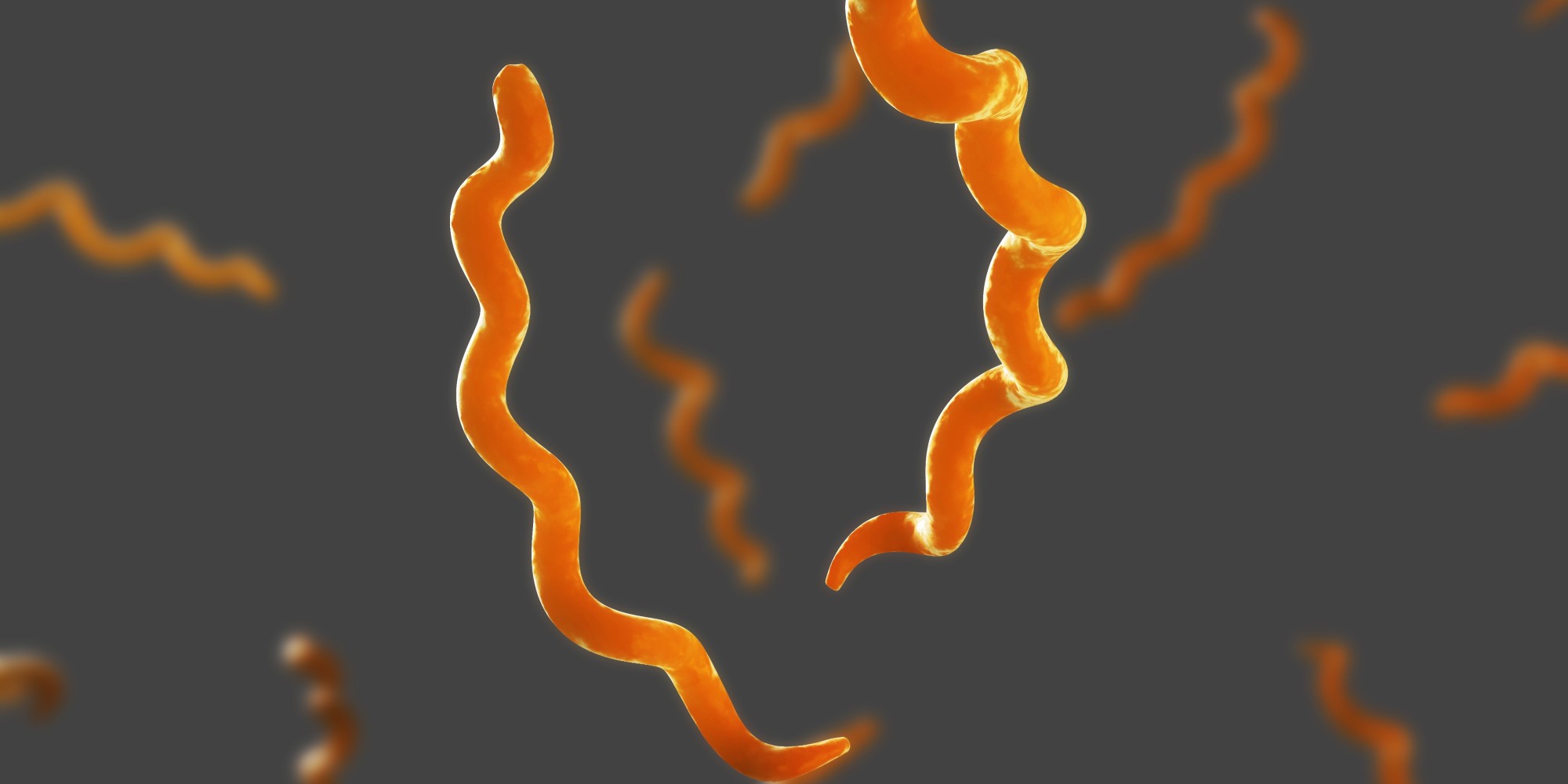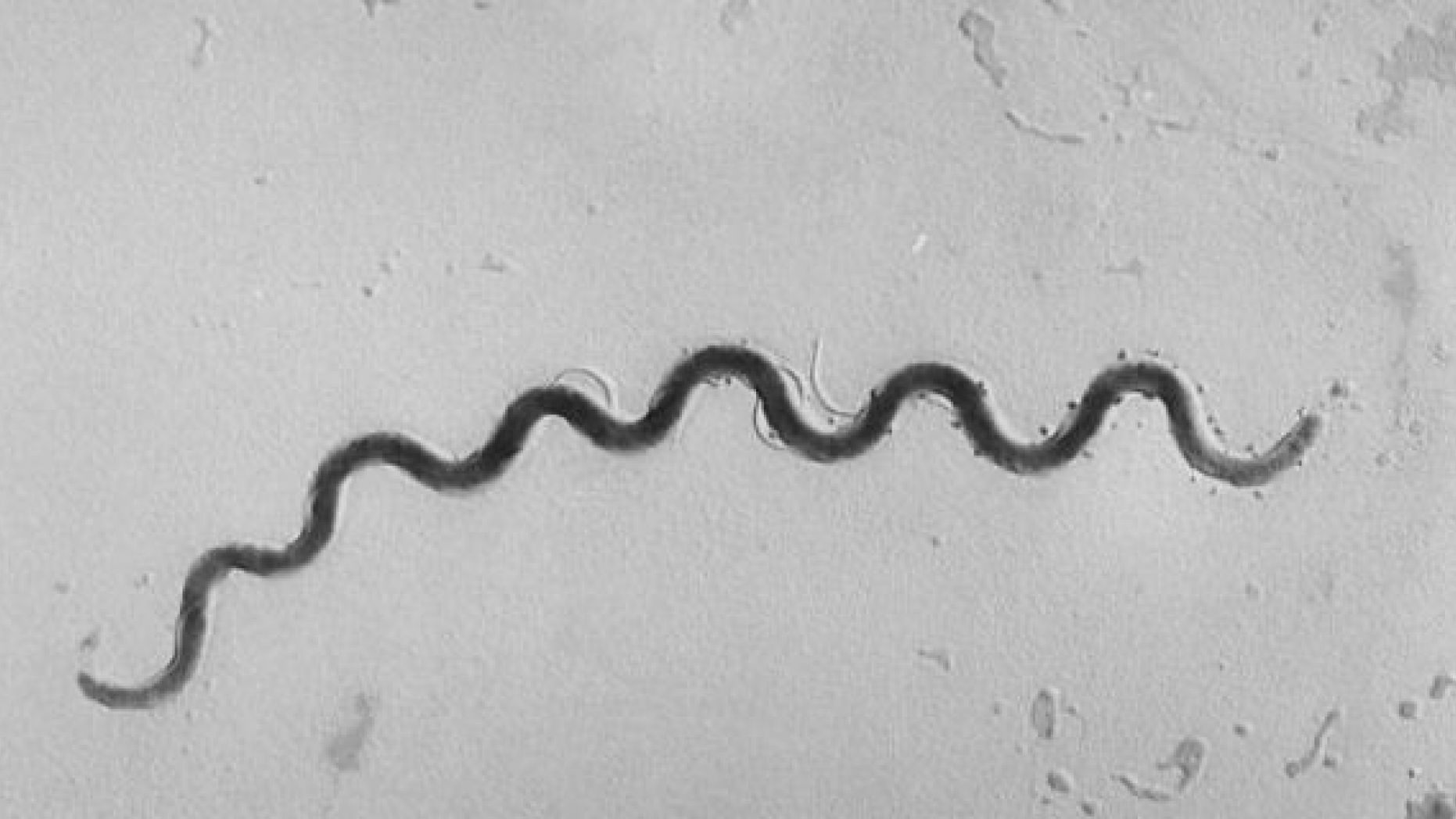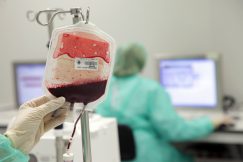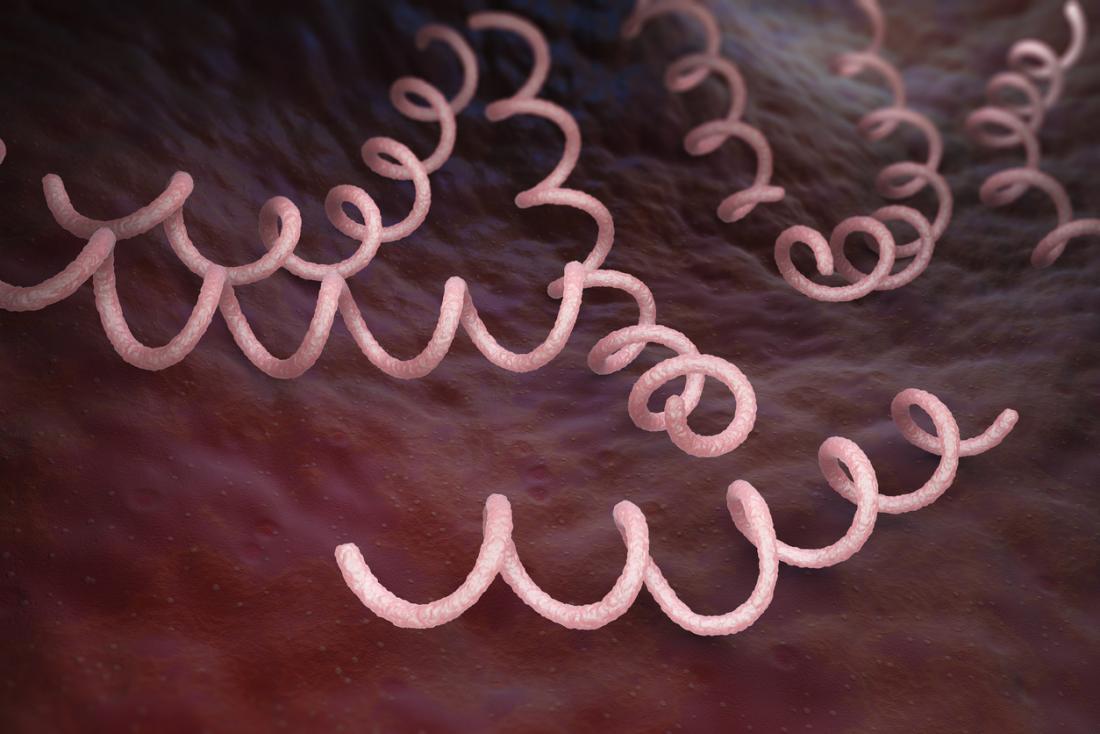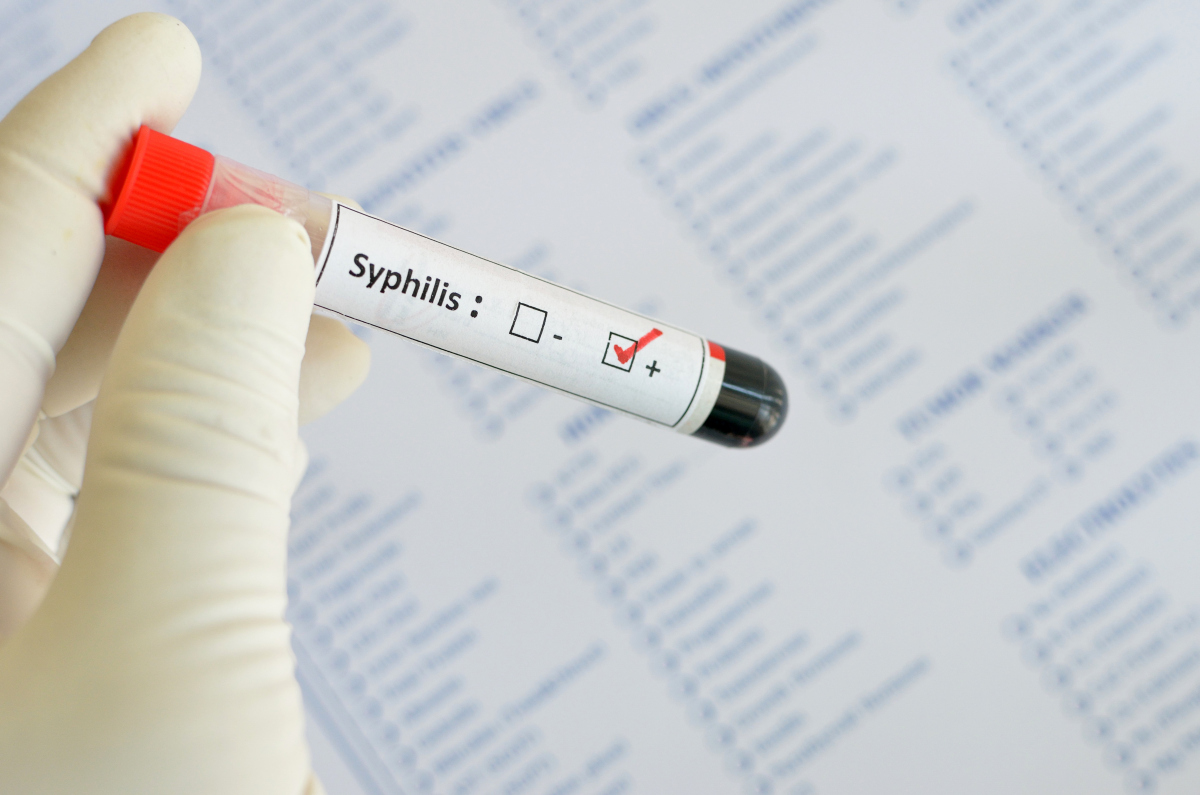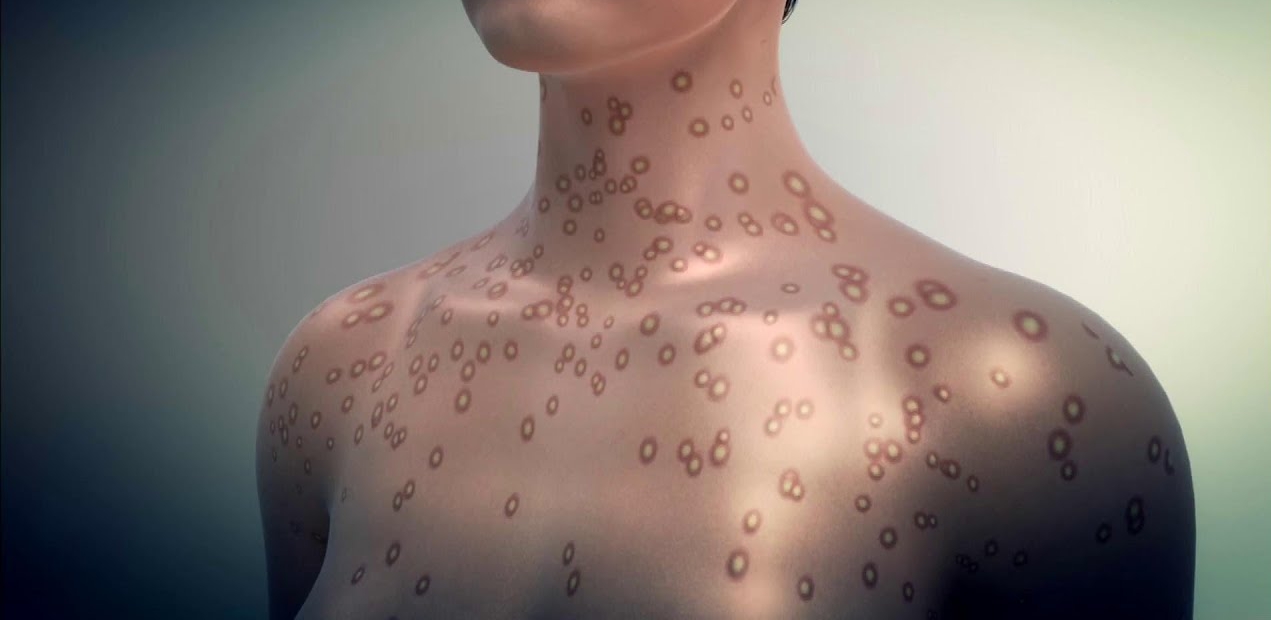The causative agent of syphilis is a gram-negative bacterium that looks like a spirochete. It is called pale treponema. The pathogenic microorganism received its name for the white upper shell, as well as for its immunity to most standard dyes, which it uses for microscopy. You can infect the bacterium by direct contact with the focal point of the disease on the patient’s skin, as well as when infected fluids (saliva, sperm) get on the mucous membranes or damaged skin. It can take more than two years to get rid of syphilis.
Material Content:
The causative agent of syphilis, a description of the type of bacteria
Treponema pallidum (lat. Name of the bacterium) is a unicellular microorganism whose body has the form of a spiral. The number of her curls ranges from 8 to 14 pieces, they are located at an equal distance from each other. At each end, the cell has several flagella that help it move around in the infected body.
Pale spirochete refers to gram-negative bacteria, that is, when conducting a Gram study, pathogenic cells do not stain blue or purple, but remain pink. The body of the microorganism is covered with a protective capsule, which consists of mucous structures. Inside the treponema there are many hydrophobic elements, so it is not susceptible to aniline dyes.
In nature, four pathogenic subspecies of pale spirochete are known to be human:
- T. pallidum pallidum - causes common syphilis;
- T.pallidum endemicum - provokes the development of endemic (non-venereal) syphilis (bagel);
- T. pallidum pertenue - the cause of a disease such as frambesia (infectious damage to the skin, subcutaneous structures, joints and bones);
- T. pallidum carateum - is the causative agent of a pint (only mucous membranes and skin are susceptible to pathological changes).
Interestingly, gram-negative spirochetes can reproduce only at a certain temperature - about 37 ° C. In addition, the division of one bacterium occurs approximately once every 30 hours. A fairly long incubation period in the human body (3-4 weeks) is associated with these factors.
Under natural conditions, only a person can get syphilis, since animals are practically immune to treponemas. However, artificially managed to infect and cause the appearance of a clinical picture in rabbits, monkeys and hamsters.
Stability in the environment
A pale spirochete is unstable in the environment, leaving the host organism, it dies within a maximum of several hours. The duration of life outside the human body depends on the factors of the surrounding world influencing it:
- temperature over 40 ° С - 4-6 hours;
- raising the temperature to 55 ° C shortens the lifespan of treponema to 15 minutes;
- when dried, the microorganism dies instantly;
- instantly dies under the influence of acids and alkalis;
- in a 40% ethanol solution it is able to maintain mobility for about half an hour, but at 60% it is immobilized immediately.
The bacterium tolerates low temperatures well, at -7 ° C its viability does not decrease, and when frozen (-18 ° C) it is able to maintain its pathogenicity throughout the year.
Syphilis infection usually occurs only through close contact with a sick person or body fluids (unprotected intercourse, medical interventions). A household transmission route is rare, usually they talk about it when there is no way to prove infection in another way.
Reproduction of pale treponemas
Pathogenic treponemas multiply by transverse division, which occurs in several stages:
- a significant increase in cell size;
- narrowing of the place where the division will occur;
- stretching and tearing of the cell membrane;
- the divergence of a group of new microorganisms.
In pale spirochetes, a relatively long division cycle is 30-34 hours, while in other microorganisms it takes 20-40 minutes. Scientists suggest that, in addition to transverse division, treponemas are able to reproduce sexually. However, this rarely occurs and only under favorable conditions in the host organism.
Bacteria under the microscope
Since treponema can be stained only using expensive and complex techniques, dark-field microscopy is used to study it. This allows you to significantly reduce the cost and speed up the process of research of biological material.
With an increase of 1000 times, the microorganism resembles a thin spiral, like a corkscrew, has regular, uniform curls. The bacteria move smoothly, without jerking, it rotates around its axis and makes pendulum swaying. The spirochete’s body has good elasticity, which allows it, shrinking and unclenching, to push small obstacles in its path, for example, blood elements.
However, increasing the power of the microscope up to 4,500 times, you can see that the curls of the microorganism have lost their correctness. And also the unevenness of the thickness of the body and its color becomes noticeable: the tips look lighter.
Using powerful microscopes with a magnification force of more than 15,000 times, it is possible to distinguish the structure of the cell, for example, the outer protective membrane.
Causes of a sexually transmitted disease
There is only one cause of syphilis - infection of the body with pale treponema, which occurs mainly when a healthy person comes in contact with a patient.Routes of transmission of the disease can be different:
- unprotected sexual contact is the most common infection;
- transfusion of poorly tested, infected blood;
- in utero, syphilis is transmitted from a sick mother to a baby, most often in the 3rd trimester of pregnancy;
- sharing with a sick person personal hygiene items;
- contact with infected biomaterial when working with it (blood sampling, microscopy of samples, surgical interventions, etc.)
Due to the long incubation period, it is difficult to establish how the sexually transmitted disease was transmitted. If syphilis is detected, the patient must warn all his partners with whom he had sexual intercourse during the last month.
Incubation period
The incubation period is the length of time that begins from the moment a pathogenic microorganism enters the body and continues until the first clinical symptoms occur. In the case of syphilis, it ends with the appearance of formation on the skin - a hard chancre in the place where the entrance gate of infection was.
Since treponema division takes a lot of time, the incubation period of syphilis lasts 3-4 weeks on average. With weakening of the immune system or due to re-infection, the hidden stage can pass faster, in 7-14 days. Conversely, with good health or taking antibiotics, it can last up to 190 days.
The incubation is characterized by the absence of any clinical manifestations. The patient feels well, does not show any complaints. In body fluids it is impossible to determine pale treponemas, since their number is too small, the Wassermann reaction shows a negative result. During this period, a person is not yet contagious; he begins to spread bacteria several days before the appearance of a solid chancre.
Antibodies to the causative agent of syphilis are produced in the body, however, they disappear almost immediately after recovery. Treponema can be infected again within 1-2 days after successful therapy, therefore it is important to treat both sexual partners at once.
Symptoms and clinical presentation
Symptoms of syphilis depend on the form of the disease, which appear one after another, if the person is not involved in the treatment of the problem.
The primary form is the first stage of the disease, begins immediately after the incubation period, 3-4 weeks after infection. It is characteristic of her:
- the appearance of a solid chancre (round ulcer with clear boundaries) at the site of penetration of treponema into the body. Most often localized on the penis, labia, on the mucous membrane at the entrance to the vagina;
- painless enlargement of lymph nodes located near the gates of infection.
The secondary form occurs 2-3 months after untreated primary syphilis. Signs:
- a large number of various rashes on the skin and mucous membranes (pinkish spots, papules and pustular lesions);
- the spread of pale spirochetes through the bloodstream, their penetration into organs.
Tertiary form - develops very slowly, the clinical picture begins to appear after 6-8 years from the moment of infection. It is difficult to treat, causes irreversible changes in the internal organs of the patient. Solid tubercles (3-4 cm each) appear on the skin, filled with a viscous liquid in which treponems float. Over time, they disintegrate, leaving significant defects on the skin and mucous membranes.
The third stage of the disease is extremely rare, since diagnostic methods allow you to determine the disease in its early forms. The treatment of syphilis is difficult and lengthy, it requires regular use of drugs according to a special scheme, which only a specialist can select and develop.



